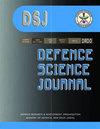Bounded PCA based Multi Sensor Image Fusion Employing Curvelet Transform Coefficients
IF 0.8
4区 工程技术
Q3 MULTIDISCIPLINARY SCIENCES
引用次数: 0
Abstract
The fusion of thermal and visible images acts as an important device for target detection. The quality of the spectral content of the fused image improves with wavelet-based image fusion. However, compared to PCA-based fusion, most wavelet-based methods provide results with a lower spatial resolution. The outcome gets better when the two approaches are combined, but they may still be refined. Compared to wavelets, the curvelet transforms more accurately depict the edges in the image. Enhancing the edges is a smart way to improve spatial resolution and the edges are crucial for interpreting the images. The fusion technique that utilizes curvelets enables the provision of additional data in both spectral and spatial areas concurrently. In this paper, we employ an amalgamation of Curvelet Transform and a Bounded PCA (CTBPCA) method to fuse thermal and visible images. To evidence the enhanced efficiency of our proposed technique, multiple evaluation metrics and comparisons with existing image merging methods are employed. Our approach outperforms others in both qualitative and quantitative analysis, except for runtime performance. Future Enhancement-The study will be based on using the fused image for target recognition. Future work should also focus on this method’s continued improvement and optimization for real-time video processing.基于曲波变换系数的有界PCA多传感器图像融合
热图像与可见光图像的融合是目标检测的重要手段。基于小波的图像融合提高了融合图像的光谱含量质量。然而,与基于pca的融合相比,大多数基于小波的融合方法提供的结果空间分辨率较低。当这两种方法结合在一起时,结果会更好,但它们可能仍然需要改进。与小波变换相比,曲线变换能更准确地描绘图像的边缘。增强边缘是提高空间分辨率的一种聪明方法,边缘对于解释图像至关重要。利用曲线的融合技术可以同时提供光谱和空间区域的附加数据。本文采用曲波变换和有界主成分分析(CTBPCA)相结合的方法对热图像和可见光图像进行融合。为了证明我们提出的技术提高了效率,使用了多个评估指标和与现有图像合并方法的比较。除了运行时性能之外,我们的方法在定性和定量分析方面都优于其他方法。未来的研究将基于使用融合图像进行目标识别。未来的工作还应关注该方法在实时视频处理方面的持续改进和优化。
本文章由计算机程序翻译,如有差异,请以英文原文为准。
求助全文
约1分钟内获得全文
求助全文
来源期刊

Defence Science Journal
综合性期刊-综合性期刊
CiteScore
1.80
自引率
11.10%
发文量
69
审稿时长
7.5 months
期刊介绍:
Defence Science Journal is a peer-reviewed, multidisciplinary research journal in the area of defence science and technology. Journal feature recent progresses made in the field of defence/military support system and new findings/breakthroughs, etc. Major subject fields covered include: aeronautics, armaments, combat vehicles and engineering, biomedical sciences, computer sciences, electronics, material sciences, missiles, naval systems, etc.
 求助内容:
求助内容: 应助结果提醒方式:
应助结果提醒方式:


